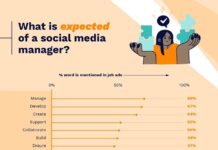KFC, the fried chicken restaurant franchise founded by Colonel Sanders, has fully embraced social media activity. And it’s paying big dividends. A study by Ogilvy found that consumers who were exposed exclusively to social media ads for KFC were seven times more likely to spend more than the average consumer.
However, this impressive statistic doesn’t come from a strict corporate focus on social media ROI. Instead, Rick Maynard, manager of public relations at KFC, says the social media team isn’t required to prove a return on investment. Maynard said the company doesn’t spend much time trying to calculate the value of its 3.4 million fans on Facebook or nearly 44,000 followers on Twitter, but he believes the use of social media to cultivate relationships with customers “has a real business output.”
Rather than focusing on social media ROI, the goals of the corporate social media team – which is managed internally – are:
- to connect and engage with KFC followers
- cultivate relationships
- respond to any inquiries
- have some fun – ex. asking questions on the KFC Facebook page, like “There’s one piece of chicken left in the bucket. What do you do?”
KFC fans are more than willing to respond, and sometimes even initiate brand interaction. Maynard said the Colonel – who passed away quite some time ago – receives marriage proposals and has been invited to weddings. While he could not make those celebrations, of course, the company sent buckets of chicken for the reception. Fans also tweet photos to the company showing off their Colonel Sanders tattoos.
Product introductions from KFC always incorporate an element of social media, according to a recent post from SmartBlog on Restaurants. That ranges from a $20,000 college scholarship contest on Twitter to the launch of KFC’s Double Down sandwich. Thousands of people commented about the sandwich launch on Facebook, others used Twitter to arrange group visits to restaurants to sample it, and dozens created YouTube videos of people trying the new sandwich.
KFC is clearly engaging fans through social media; is there any need for a deeper focus on ROI, or a way to measure that engagement? Maynard said “It’s a very important customer-service element, and that’s enough for us.” Do you agree?


